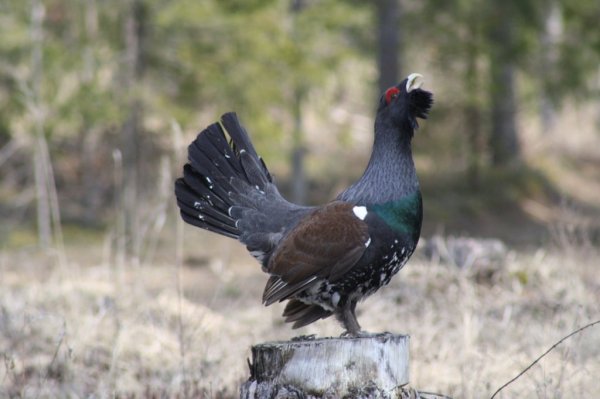Providing Timber Supplies during the Woodgrouse Rutting Season
Spring is the time of rutting and nesting; therefore, from 1 March to 31 May, forest works are carried out with special care so as not to disturb these birds. When organizing deliveries of timber, an additional condition must be observed – cargo loading must be carried out during the permitted hours of the day.
In the territories managed by JSC “Latvia's State Forests” (LVM) there are hundreds of rutting woodgrouses; however, logging works are not carried out in all these territories. In the entire territory of Latvia, approximately one hundred log warehouses of Latvia’s State forests are located in the buffer zone of the woodgrouse rut. Eastern Vidzeme and North Kurzeme are the most widely affected regions with respectively one third and one fourth of the total number of warehouses located in the buffer zone of the hunting rut. In two regions of Latvia, Southern Kurzeme and Zemgale, warehouses were set up at the beginning of April in such a way that no warehouse was located in the buffer zone of rutting of woodgrouses.
When planning the daily deliveries of logs to customers, Latvia’s State forest employees use the LVM GEO information system to identify warehouses from which deliveries should be made, observing the time of day allowed for loading operations.
“The sequence of cargo delivery is planned in such a way that the limit can be respected, additionally informing thereof the driver of the timber carrier involved in the execution of the work. The mutual communication between the logistics specialist and the manager of the timber hauler allows timely re-planning of the work, if changes have occurred during the execution of the work that would have affected the rutting time of the wood. With the support of information systems, it is easier to accomplish such a task, planning and delivering up to 800 loads to customers every day, and all of them are delivered without disturbing the rutting of the woodgrouses,” says Jānis Mellums, Head of LVM Supply Planning.
The woodgrouse (Tetrao urogallus) is the largest gallinacean in the world. This bird species has adapted to life in natural boreal forests. Given the wide distribution range of the species, the habitats inhabited by the woodgrouses differ, but everywhere the woodgrouses are associated with large, sparsely fragmented coniferous or mixed forests interspersed with swamps.
The wingspan of the woodgrouse can exceed a metre, the length of the wings for females is around 65 cm, for males – around 90 cm. Males are black (wings are dark brown), feathers have a metallic sheen, the only white areas are on the shoulders, tail, underside of the body, and a red bald area around the eye. Females are brown spotted.



